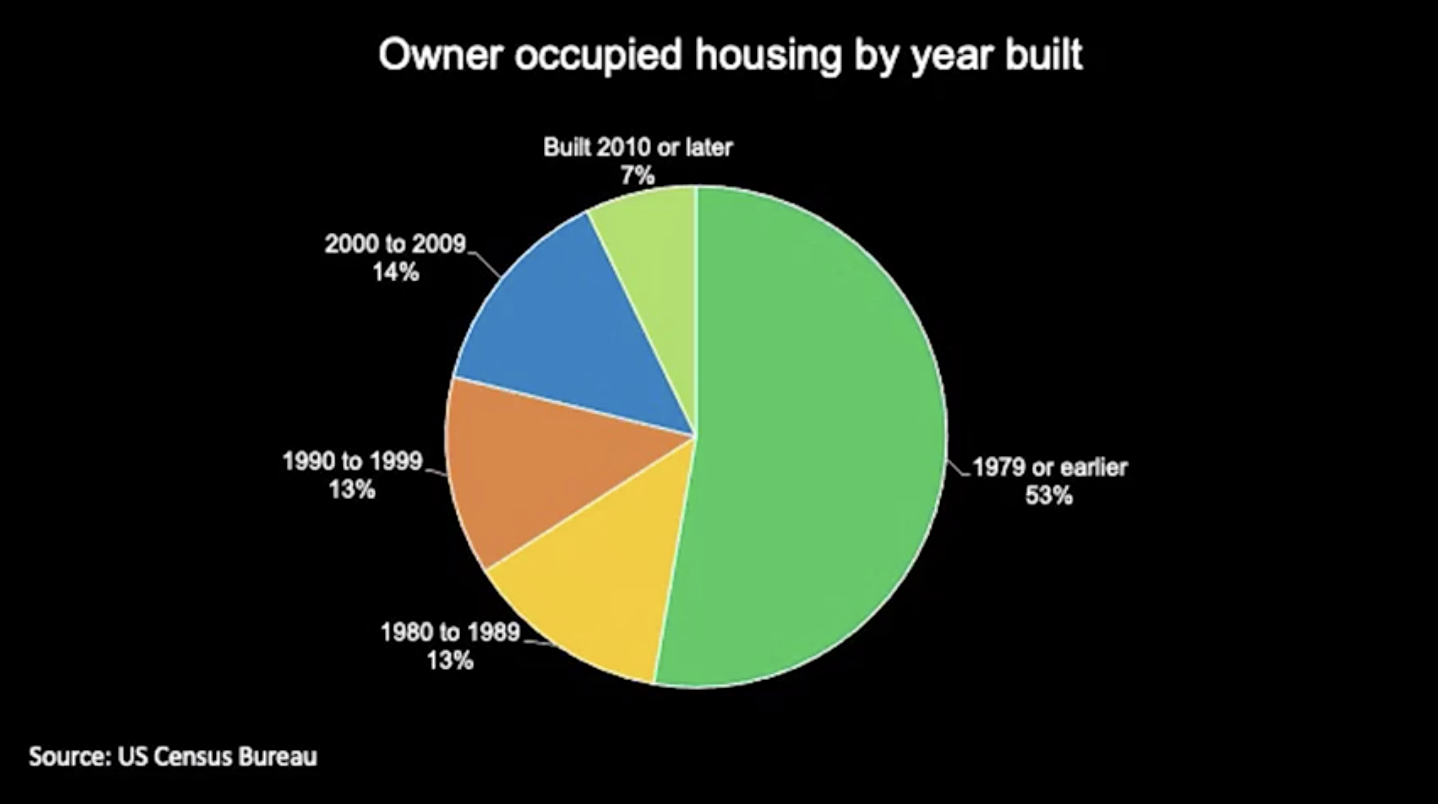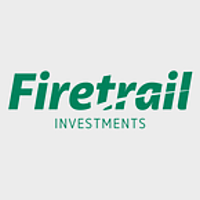One Aussie company that's just doubled its appeal
Low interest rates, record-breaking consumer savings and a seemingly never-ending stimulus package have blended together to create the perfect conditions for a global housing boom. According to Firetrail Investments' Ramoun Lazar, the US housing market is one sector investors can't afford to miss out on.
But the question still remains... how should Australian investors get exposure to this rapidly growing area of the market? Lazar has one very simple answer to that question and it's James Hardie (ASX:JHX). One of the few Australian offshore success stories, James Hardie is both capitalising on the macro environment of the housing boom, while also experiencing structural growth opportunities within their product portfolio.
In this video, Lazar explains why James Hardie still has a lot more room to run with the possibility of doubling its total addressable market in the future and why the valuation doesn't reflect this.
Edited Transcript
Hi there, and welcome to the first episode of the Firetrail Analyst series for 2021. To give you a quick refresh on what the Firetrail Analyst series is all about, each episode we'll get a Firetrail Analyst to take us on a deep dive into a stock or sector in the Aussie equity market to find out what matters. Today I'm joined by one of our portfolio managers of the Absolute Return Fund, he's also our resident expert on materials and industrials, Ramoun Lazar. Ramoun, thanks for joining me today.
Let's get straight into it. Today we're going to have a chat about a sector that did not skip a beat through COVID, it strengthened throughout last year - the US housing market. And we’ll also talk about how we're getting exposure to this in the Aussie equity market through James Hardie, a top holding in the high conviction fund.
Could you give us a bit more insight into what's going on in the US housing market and the outlook after such a strong 2020?
It's certainly been an interesting period over the last 12 months for the US housing market. If we start with COVID, so what we saw through COVID was people going into lockdown, trying to find what to do with that additional time at home, and what we saw in the US was an initial uptick in do it yourself activity. So people were just doing small repair jobs around the home, making their homes more presentable, more livable. As the year went through, what we saw was the fed coming in, introducing quite large amounts of monetary stimulus, which was then followed by quite large amounts of fiscal stimulus. And that really got their housing market started and gaining some significant momentum through the second half of the calendar year. That momentum was being driven by millennials coming back into the market - so, first home buyers. When I say millennials, people in their mid-20s to around 40 years of age who haven't been active in that US housing market for some time. That combination of factors, monetary, fiscal stimulus has really got that cohort working in the US and we think that's going to continue over the next 12, 24 months, as long as rates in the US stay manageable.
So the implications are two prong there. The first one is what's going to happen to existing homes. We think more repair, remodel activity. If I show you this chart, we'll put up this chart.

It just shows you the average age of a US house is around 40 years old. So quite an old footprint for the US housing stock. As that millennial cohort start to buy houses, get married, have a family, what we're going to see is an increased level of repair and remodel activity. And that's going to underpin spend in that renovation sector of the market or segment of the market.
The second driver will be new homes. So new home activity, as I said, really accelerated through the second half of the calendar year, but we're only back to mid-cycle type levels of housing starts in the US. We estimate the US needs about 1.5 million new homes every year, just to stand still. So when I say mid cycle, it points to that one and a half million type housing start number. Now over the last 10 years, we've seen housing starts materially below that one and a half million starts level that's required to keep the US just standing still. The reason for that is after the 2008 housing led financial crisis, that millennial cohort was very slow in embracing homeownership, but with the large amounts of monetary and fiscal stimulus coming in, we think that that's going to underpin new housing activity, and certainly, the order books for the US home builders are displaying that over at least the next six months we think.
So at the moment, we don't think that the market is assuming anything over and above a mid-cycle type housing start number, whether it be 21 or 22. But given that there's been a period of under build in that US housing market, we also think that pent up demand will result in a period where housing starts need to run above that one and a half million start number for the market to catch up with demand. So that will ultimately underpin in our view, macro led earnings upgrades for someone like a James Hardie.
With such a strong macro backdrop, why is James Hardie Firetrail’s top pick in the way to play the US housing thematic?
There are several reasons why we liked James Hardie. The first one is that it's an absolute leader in its category. That category being the exterior siding market. It's a very well known brand, a very respected brand in the US. It's growing with the macro, but it's also taking share from competitors. So if you look at the volume growth rate, it's actually growing above market rates. It's taking share from inferior products like vinyl. We don't have vinyl in Australia, but it's a popular product in the US because it's cheap. It's also taking share from traditional materials like wood. We think that's going to continue. The final couple of reasons are James Hardie has an ability to generate very high incremental return on capital. So every dollar that is invested, generates a very high return on that dollar that's invested. And finally, we think that given the growth profile, the stock looks reasonably attractive at current price levels.
The earnings growth profile for them, can we dig in a bit there of what you're expecting in the coming periods? Is it all macro, or is this something Hardie’s is doing to improve their earnings itself?
Yeah, so some of it is macro, we've talked about that - that will underpin volume growth. Pricing typically grows by two or 3% on a net basis after rebates. So you've got an environment where we think on average, it can grow the top line by about 10%. Now, the other story for Hardie’s is margin expansion. We've several periods now of margin expansion in their North American business, and we think that's going to continue. And what that's been driven by is a lot of self-help initiatives around manufacturing. So refocus on manufacturing and that was emphasized about three years ago by the new management team. The new management team at Hardie’s came in, they initiated a lean manufacturing program, and what lean means is that you reduce waste in your manufacturing footprint, and as a result of that you produce a better product; less defects, more throughput, and you reduce unit costs. So what that’s underpinned is margins growing to close to 30% in the last couple of quarters. Historically Hardie’s targets between a 20 to 25% margin. We think that uplift is sustainable. The market's been really sceptical about the sustainability of the lean benefits coming through, but we think that that's going to underpin further upgrades as the market catches up to those sorts of margin levels over the next few years.
The other thing that's a positive, and I think this is from an ESG sort of viewpoint, is that you're obviously reducing waste, which is positive from an environmental footprint, but also from a social and governance footprint. Hardie’s manufacturing operations have typically had a very high turnover rate - staff turnover rate. By introducing predictability in that manufacturing footprint, what we've seen is that those very high turnover rates have declined significantly where Hardie’s turnover now is pretty much best practice if you look across any building manufacturing business. So we've got volumes on one side, but we've also got a margin story there, which we think again, underpin potential and likely earnings upgrades over the next several years.
That's good to hear. Now at Firetrail, we invest with a medium-term investment horizon. When you're looking out two, three, five years in the distance, what gets you excited about James Hardie and what will surprise the market?
Yeah, so we spoke about the top line, supportive volume backdrop, pricing backdrop, and we spoke about margin and the upside there, but the real exciting factor we think over the next two, three, five years for James Hardie is the new product portfolio that they're about to introduce into that US housing market. So traditionally James Hardie has targeted that wood look market, so vinyl, wood itself, but it's about to release a portfolio of products in the US that will target other segments of the market, such as brick and stucco. Stucco's known here as cement render, which is a very popular exterior siding product in the US. So if you take that into account, we think that the new product set will double the available market opportunity for James Hardie over the next, two, three, five years. What it comes down to ultimately is execution and how they can convert those new products into sales. At the moment, we don't think the market is factoring much in for additional sales of those new products or any share gains that may be available from that brick or stucco market. If management can execute as a result, we think there are significant earnings and valuation upside potential in James Hardie from that new product portfolio.
FOLLOW us to get first access to the Firetrail Analyst Series
We hope you enjoyed this wire on the building sector and James Hardie. The Firetrail Analyst Series has kicked off and will unfold on a monthly basis throughout 2021. If you'd like to receive our other exclusive reports first, hit 'FOLLOW' below.
1 topic
1 stock mentioned
2 contributors mentioned

